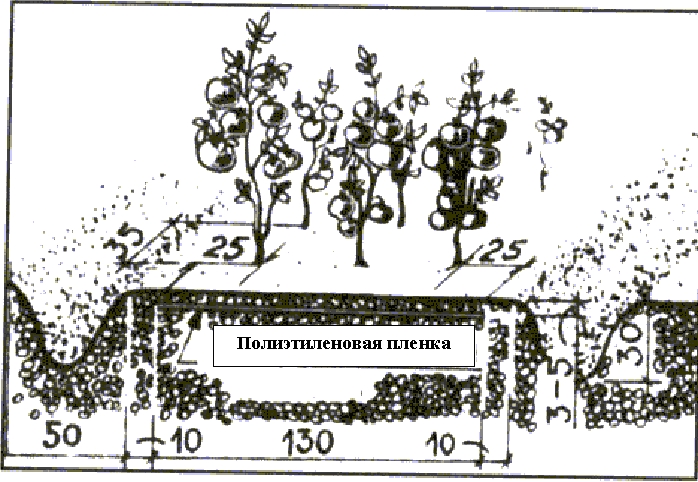If there is no water in the cottage
If there is no water in the cottage
Candidate septicoscience . Scientific employee of the Tajik Forest Experimental Station N.F. LUKIN
How is this done in practice?
First of all, by keeping the upper layer of soil in a constantly loose state and mulching its surface with various low heat-impregnated materials: wood sawdust, dry grass, straw, pieces of roofing material, slate, etc. The size of the cultivated area for shrubs, seedlings and young trees (up to 5-
Even an inexperienced summer resident knows that mulching the soil improves its water-air regime and is therefore useful absolutely for all plants, both annuals and many years .
In addition, for individual gardening and gardening the most useful is the heat sink screen made of polyethylene film covered with a layer of soil of 3-
Transparent film, just bedded on the soil, will give a greenhouse effect. This is a trap for heat. Covering the film with a layer of soil, we get the opposite effect: all heat absorbs and intensively radiates the cover layer of the soil. The film does not pass through the soil warmly into the soil. This is also a trap, but not for heat, but for vaporous moisture.
Before spreading the film, the soil must be dug into the spade bayonet, mixed with a two to three-year dose of organic and mineral fertilizers, and properly leveled with rakes.
Then cover the film with pieces of 2x2 m under the trees with a continuous cloth, making slits for the trunks near the bushes or grapes.
Stepping back
For the winter, the film is not removed. Precipitation is collected and absorbed by the soil in the grooves. The film does not prevent the winter-spring moistening of the soil. In the spring, it is necessary to inspect, adjust and slightly loosen the cover layer of the soil.
The beds can be of any length. They can be arranged parallel to each other, leaving gaps for the grooves .
The figure shows the scheme by which tomatoes were planted in the Dushanbe Botanical Garden.
The total width of the ridge -
When planting the cover layer of the soil was raked, a slot was made in the film.
The roots were placed under the film.
The height of tomatoes by August reached an average of 60-
By analogy with tomatoes, you can grow a tank of lazhans, pepper and other vegetables under the film , except for root crops.
The following year, these same ridges can be used without digging, only to remove last year's tops. You can plant in the old seats. If small fruits do not suit you, then you can water in the grooves. The water in this case will all be tightened under the film, and for irrigation it will take three to five times less, and watering should be infrequent. If the droughts are short-term - two to four weeks - then watering will not be required at all.
In the conditions of the most severe heat in the soil under the film, a very even though rather harsh regime of humidity is established: 10-14 percent (by weight). The daily fluctuations in temperature are reduced threefold, which is favorable for the rapid development of a useful soil population, which is intensively loosening the soil. The soil under all types of mulch successfully retains its looseness and porosity and does not need any digging.
In the southern Ukraine and other arid regions, the picture is likely to be similar. In cases of prolonged rains in the summer, nevertheless, it is probably necessary to foresee the possible descent of water along the grooves, not to allow the flooding of the film from above. Otherwise, the roots may suffocate and rot.
If the film will work after 3-4 years, then the grooves can be used to apply fertilizers: they are already suitable active roots. The grooves themselves should be covered with dry grass after weeding the site.



Comments
Commenting on, remember that the content and tone of your message can hurt the feelings of real people, show respect and tolerance to your interlocutors even if you do not share their opinion, your behavior in the conditions of freedom of expression and anonymity provided by the Internet, changes Not only virtual, but also the real world. All comments are hidden from the index, spam is controlled.